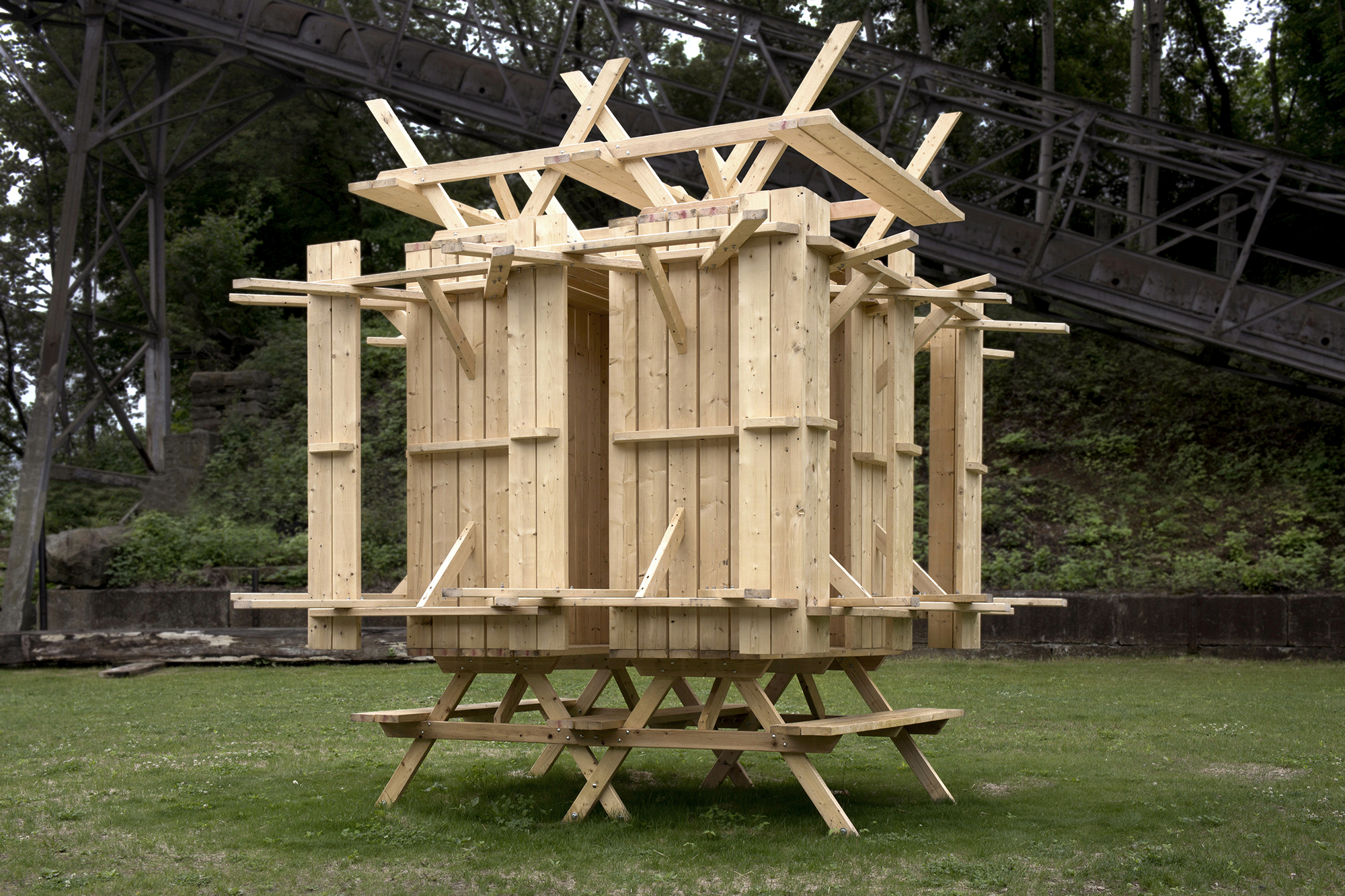
Tortoise Cube [2012]
Wood, stainless steel, 346 x 354 x 391 cm
The sculpture “Tortoise” uses standard picnic tables—an immediately recognizable representation of North American leisure culture—as building blocks to transform them into an enclosing structure. ˚The ancient Roman ‘tortoise formation’ is a tactic, commonly used during military campaigns, obviously taking its principles from the animal of its namesake. Inspired by the plated carapace that protects the land turtle from predators, the military formation is a defensive architecture powered by humans. The soldiers compose their individual shields into an overall armor that protects the entire unit from projectiles.˚ Showing their undersides and using their legs in an almost defensive manner against surrounding threats, the picnic tables of ‘Tortoise’ form a fort, defining and guarding its inner space. Notwithstanding its fortified character, the wooden formation invites physical interaction especially for children who will like to crawl inside and playfully hide from adults.˚ The American symbol of leisure is turned inside out to create a sculpture that resists its essential banality, while offering a plethora of alternative uses. (Thilo Folkerts)
